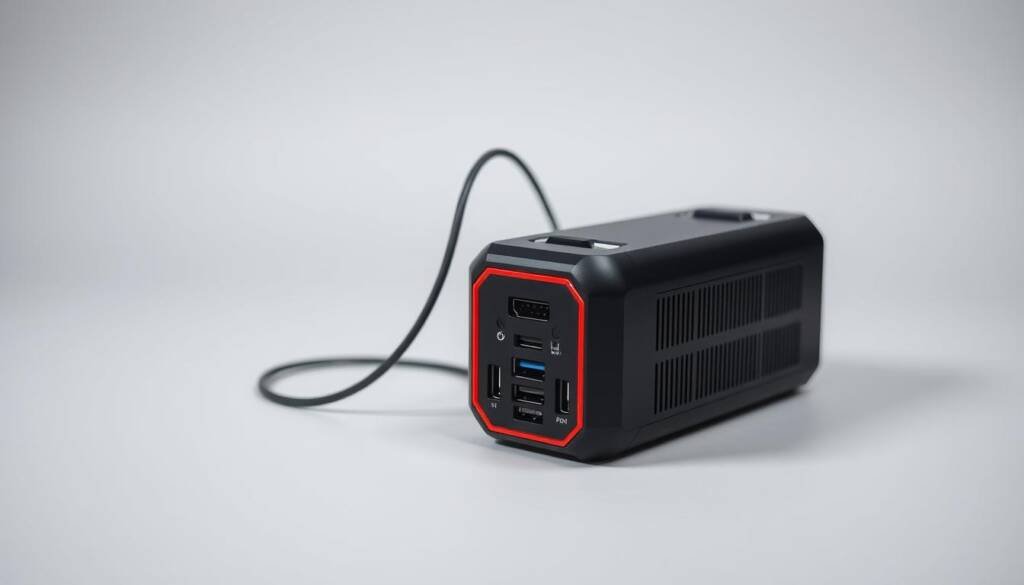Did you know that a single portable power station can keep essential devices running for up to six hours during an outage? These compact energy solutions are revolutionizing how we think about backup power, offering a reliable and eco-friendly alternative to traditional generators.
Portable power stations are more than just a convenience—they’re a necessity in today’s world. Whether you’re camping off-grid, preparing for emergencies, or simply need a mobile energy source, these devices provide versatility and peace of mind. With multiple output options, they can charge everything from smartphones to mini-fridges, making them indispensable for tech-savvy professionals and outdoor enthusiasts alike.
This article dives into the most frequently asked questions about portable power stations. From understanding their capabilities to maintaining their performance, we’ll cover everything you need to know. By the end, you’ll have a clear understanding of how these devices work and why they’re a smart investment for sustainable energy solutions.
Key Takeaways
- Portable power stations are versatile and eco-friendly energy solutions.
- They can power essential devices for hours during outages or outdoor trips.
- Multiple output options make them suitable for various devices.
- Regular maintenance ensures long-term performance and safety.
- Solar charging options enhance their sustainability and usability.
Understanding Portable Power Stations

Portable power stations are reshaping how we access energy on the go. These compact devices are designed to provide reliable power wherever you need it, whether you’re camping, working remotely, or facing an emergency. Unlike traditional generators, they are quiet, emission-free, and easy to use, making them a modern energy solution for tech-savvy professionals and outdoor enthusiasts alike.
Definition and Key Characteristics
A portable power station is essentially a battery-powered generator that stores energy for later use. It typically includes a lithium-ion battery, an inverter to convert DC power to AC, and multiple output ports for charging devices. These stations are lightweight, compact, and designed for mobility, offering a convenient alternative to bulky, noisy generators.
One of the standout features is their noise-free operation. Traditional generators rely on combustion engines, which produce fumes and loud noises. In contrast, portable power stations operate silently, making them ideal for indoor use or quiet outdoor settings. Additionally, they are eco-friendly, as they produce no harmful emissions.
Types and Applications
Portable power stations come in various sizes and capacities, catering to different energy needs. Smaller models, like the Yeti 200X with 187 watt-hours, are perfect for charging phones or tablets. Larger units, such as the Jackery Explorer 3000 Pro with 3024 watt-hours, can power appliances like mini-fridges or even serve as emergency backup systems.
These devices are versatile and can be used in numerous scenarios. For example, they are invaluable during power outages, providing essential energy for lights, communication devices, and medical equipment. They are also popular among campers and remote workers who need a reliable power source off-grid.
Many modern portable power stations now integrate solar charging capabilities, enhancing their sustainability. With compatible solar panels, you can recharge the battery using sunlight, making them an excellent choice for eco-conscious users. This feature not only extends their usability but also aligns with global trends toward renewable energy solutions.
Safety is another key aspect. Most models include features like overload protection, short-circuit prevention, and temperature control, ensuring safe operation in various conditions. This makes them a reliable choice for both everyday use and emergencies.
In summary, portable power stations are a versatile, eco-friendly, and user-friendly energy solution. Whether you’re looking to power small devices or need a robust backup system, these devices offer a practical and sustainable way to meet your energy needs.
Benefits and Use Cases for Portable Power Stations

In today’s unpredictable world, having a reliable energy source is more important than ever. Portable power stations offer a versatile solution for both emergencies and everyday needs. Their compact design and efficient performance make them indispensable for a variety of scenarios.
Emergency Backup Applications
During power outages, a portable power station can be a lifesaver. It ensures essential devices like lights, phones, and medical equipment stay operational. With high-capacity batteries, these stations provide uninterrupted energy for hours, giving you peace of mind during emergencies.
Many models feature pass-through charging, allowing you to use the station while it’s being recharged. This is particularly useful during prolonged outages. Additionally, their silent operation and emission-free design make them safe for indoor use, unlike traditional generators.
Outdoor Adventures and Remote Work
For outdoor enthusiasts, portable power stations are a game-changer. They power everything from camping lights to portable fridges, enhancing your experience in the wild. With solar charging options, you can harness renewable energy to keep your devices running indefinitely.
Remote workers also benefit from these stations. They provide a reliable power source for laptops, routers, and other essential equipment, ensuring productivity even in off-grid locations. Their user-friendly design and multiple output ports make them easy to use in any setting.
Whether you’re preparing for emergencies or planning your next adventure, portable power stations offer unmatched convenience and reliability. Explore more about their innovative features at portablepowerstationbattery.com.
Common Questions About Portable Power Stations Answered

How do you ensure your devices stay powered when you’re off the grid or during an outage? Portable power stations are designed to meet these challenges, offering versatile charging options and seamless compatibility with a wide range of appliances. Let’s dive into the most frequently asked questions to help you make the most of your energy solution.
Charging Options and Efficiency
One of the standout features of a portable power station is its ability to charge through multiple methods. You can use a wall outlet, a solar panel, or even a car charger, depending on your needs. Solar charging, in particular, is a sustainable option that allows you to harness renewable energy, making it ideal for outdoor adventures or emergencies.
Charging times vary based on the battery capacity and the power source. For example, a 600-watt-hour model might take 6-8 hours to fully charge via a wall outlet but could take longer with solar panels, depending on sunlight conditions. Always refer to the manufacturer’s guidelines for specific details.
Compatibility with Appliances and Devices
Before using your power station, it’s essential to check its compatibility with your devices. Start by comparing the wattage requirements of your appliances with the station’s output. For instance, a mini-fridge typically requires around 100 watts, while a laptop might need 50-60 watts.
Most models come with multiple output ports, including AC outlets, USB ports, and DC outputs, ensuring they can power everything from phones to small appliances. If you’re unsure, consult the manufacturer’s documentation or use an online wattage calculator to avoid overloading the system.
Safety is another critical factor. Unlike traditional generators, portable power stations are safe for indoor use because they produce no emissions. However, ensure proper ventilation to prevent overheating, especially when running high-demand devices. Built-in safety features like overload protection and short-circuit prevention add an extra layer of security.
For more detailed insights, learn more about portable power stations and their innovative features.
Comparing Portable Power Stations with Traditional Generators
When choosing between a portable power station and a traditional generator, it’s essential to weigh their environmental and operational differences. Both serve as reliable energy sources, but their features and impacts vary significantly.
Environmental Impact and Noise Levels
Traditional generators, often powered by gasoline or propane, produce emissions that contribute to air pollution. In contrast, portable power stations rely on battery technology, making them emission-free and eco-friendly. This makes them a better choice for indoor use or environmentally sensitive areas.
Noise is another critical factor. Traditional generators can reach noise levels of 70-90 decibels, which can be disruptive. Portable power stations, however, operate silently, making them ideal for quiet environments like homes or campsites.
Safety Features and Indoor Use
Safety is a top priority when selecting a power solution. Traditional generators emit fumes, posing risks if used indoors. Portable power stations, being fume-free, are safe for indoor use, provided they are well-ventilated to manage temperature.
Modern portable power stations come equipped with advanced safety features like overload protection and surge management. These features ensure safe operation, even when powering high-demand devices.
For those seeking a sustainable and quiet energy solution, portable power stations offer unmatched advantages. They align with modern energy standards, making them a smart choice for both home and outdoor use.
Integrating Solar Energy with Portable Power Solutions
Harnessing solar energy with portable power stations is a game-changer for sustainable living. By pairing these devices with solar panels, you can create a reliable, off-grid energy source that’s both eco-friendly and cost-effective. This integration is ideal for outdoor adventures, emergencies, or even everyday use.
Choosing the Right Solar Panel
Selecting the right solar panel is crucial for maximizing efficiency. Look for panels with wattage and voltage compatibility that match your portable power station. Most models require panels with a wattage between 100W and 200W for optimal performance.
Connector type is another important factor. Ensure the panel uses a compatible connector, such as MC4 or Anderson, to avoid compatibility issues. Brands like Jackery and Goal Zero offer panels specifically designed for their power stations, ensuring seamless integration.
Optimizing Solar Charging Efficiency
To get the most out of your solar panel, proper orientation is key. Position the panel to face the sun directly, adjusting its angle throughout the day for maximum exposure. Regular cleaning is also essential to remove dust and debris that can reduce efficiency.
Using an inverter can further enhance performance by converting solar energy into a usable form for your devices. Many modern portable power stations come with built-in inverters, simplifying the process.
Home Solar Installation Compatibility
While portable power stations are designed for mobility, they can also complement home solar systems. However, compatibility depends on the model and its charging capabilities. Some stations can integrate with residential solar arrays, providing backup power during outages.
Always check the manufacturer’s guidelines to ensure your power station supports home solar integration. This ensures safe and efficient operation, maximizing the benefits of renewable energy.
Maintenance and Longevity of Portable Power Stations
Ensuring your portable power station lasts for years requires proper care and maintenance. By following a few simple guidelines, you can maximize its performance and extend its lifespan significantly.
Battery Care and Lifespan Considerations
The battery is the heart of your power station, and its care directly impacts longevity. Regular charging cycles are essential. Avoid letting the battery drain completely; instead, recharge it when it reaches around 20% level to prevent damage.
Storage conditions also play a crucial role. Keep your station in a cool, dry place, away from extreme temperatures. High heat or cold can degrade the battery over time, reducing its capacity and efficiency.
“Proper storage and regular maintenance can double the lifespan of your portable power station.”
Monitoring battery performance is equally important. Look for signs like reduced runtime or slower charging, which may indicate it’s time for a replacement. Most lithium-ion batteries last between 500 to 2,000 cycles, depending on usage and care.
Here are some best practices to ensure long-term performance:
- Recharge the battery regularly, even during periods of non-use.
- Avoid over-discharging, as it can permanently damage the battery.
- Clean the unit periodically to prevent dust buildup.
- Follow manufacturer guidelines for periodic maintenance and replacement.
By adhering to these tips, you can keep your portable power station running efficiently for years, saving costs and ensuring reliability when you need it most.
Conclusion
As we embrace sustainable energy solutions, portable power stations have emerged as a reliable and eco-friendly choice for modern power needs. These versatile devices offer a clean, quiet alternative to traditional generators, making them ideal for both indoor and outdoor use. Whether you’re preparing for an outage, camping off-grid, or working remotely, they provide a dependable energy source for essential devices like phones, laptops, and small appliances.
One of the standout features is their compatibility with solar panels, allowing users to harness renewable energy and reduce their carbon footprint. This integration not only enhances sustainability but also extends the capacity and usability of these stations. Compared to noisy, fuel-dependent generators, portable power stations operate silently and emit no harmful fumes, ensuring safety and convenience.
When selecting a model, consider factors like capacity, output, and design to meet your specific needs. Proper maintenance, such as regular charging and storage in moderate temperatures, can significantly extend the lifespan of your power station. For more insights, explore versatile devices and their innovative features.
In conclusion, portable power stations are a smart investment for anyone seeking reliable, sustainable energy solutions. Their versatility, efficiency, and eco-friendly design make them indispensable in today’s world.